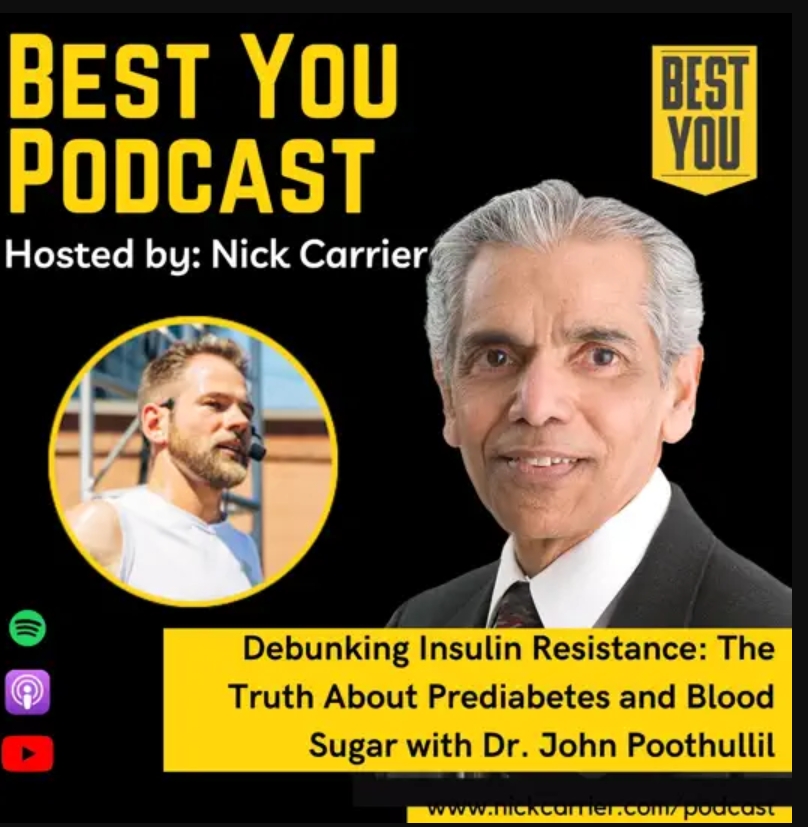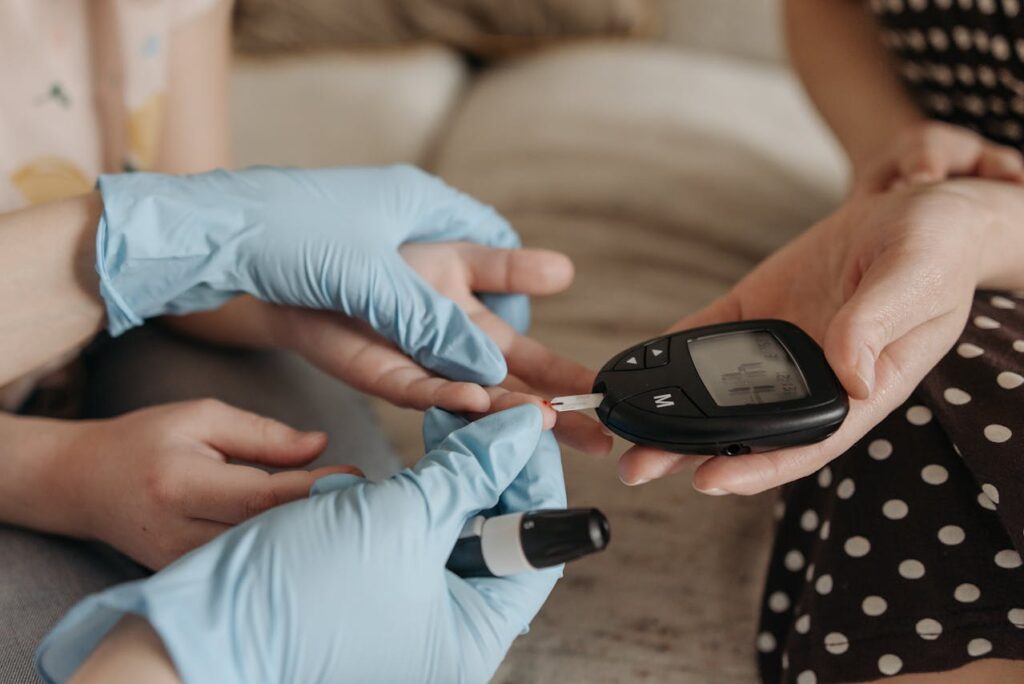
This blog is part of my series about “Insulin Resistance.” In this piece and accompanying video, I am addressing the many medical professionals and other parties interested in helping reduce the pandemic of Type 2 diabetes that is spreading throughout the world. Please note that I do not sell any diets, programs, supplements, tablets or gadgets. My information is solely about how we medical professionals and health writers can help solve the problem of Type 2 diabetes through better public education, particularly about the role of diet in causing high blood sugar. I hope you will help me share.
To all medical researchers, science bloggers and writers of health information —
I would like to invite you to open your mind to the fact that insulin resistance is very likely a false theory to explain the cause of Type 2 diabetes. I realize this asks much of you if you have accepted the insulin resistance theory. However, I remind you that the history of medicine contains many examples of mistaken beliefs that took years of intense scrutiny to rectify.
A recent example of a changed theory is that of Helicobacter pylori as the cause of stomach ulcers. The bacteria were first identified by German scientists in the lining of the human stomach in 1875 and in the acidic environment of the stomach of dogs in 1893. Doctors Barry Marshall and Dr. Robin Warren of Perth, Australia then discovered the same bacteria in stomachs of patients with stomach ulcers in 1982. However, based on the thinking of the time that no bacterium could survive the acid environment of the human stomach, no one would accept the possibility of a bacterial origin for stomach ulcer. In order to convince the medical profession of the role of the bacteria in causing gastritis and gastric ulcer, Dr. Marshall of Australia drank a beaker of H. pylori culture and, sure enough, developed a stomach ulcer.
The concept of insulin resistance as the causative factor of Type 2 diabetes is, in my view, ripe for a similar revision. The theory was first proposed back in 1931 when it was noted that some adults with high blood sugar were not responding to injections of insulin in the same fashion as children who were diagnosed with Type 1 diabetes. For lack of a better idea, Professor Wilhelm Falta of Vienna advanced the concept that the adults were resistant to insulin. He suggested a potential defect in the internal working of the responding cell to insulin underlying Type 2 diabetes. It was only a provisional conjuncture to guide further investigation into the logic, mechanism, and measurement of this resistance.
In 1936, Sir Harold Percival Himsworth of the University College Hospital Medical Centre in London published a test to separate diabetic patients into insulin-sensitive and insulin-insensitive types. His objective was to suggest that a type of diabetes mellitus might exist which was due, not to lack of insulin, but rather lack of sensitivity to insulin. Endocrinologists immediately accepted this test as confirmatory evidence of the existence of insulin resistance and claimed it as the core metabolic abnormality in Type 2 diabetes. However, this acceptance of the theory created three immediate challenges.
The first was explaining the destination of glucose molecules that were removed from the blood in response to insulin, in a person whose cells are supposedly resistant to it. The second was coming out with a rationale for treatment. The third was to develop a test to measure the degree of insulin resistance to guide the type and intensity of treatment.
The first challenge was dealt with not by identifying cells that were accepting glucose in response to insulin but by identifying cells that are supposedly resistant and therefore not accepting glucose. Muscles, liver cells and fat cells were selected, but not because of any proof that these cells were resistant but because this made it easier to explain the laboratory findings seen at the time of diagnosis of Type 2 diabetes. For example, increased levels of circulating fatty acids served as the evidence that fat tissue was resistant to insulin. Similarly, an increased release of glucose from the liver and the reduced entry of glucose molecules into resting muscles were the evidence used to explain insulin resistance in these organs. (Note: active muscles don’t require assistance from insulin to accept glucose).
To formulate a treatment plan, endocrinologists concentrated on the lower than expected levels of insulin at the time of diagnosis of Type 2 diabetes in most individuals. It was argued that the pancreas was not responding at the level it should to high blood glucose level, and therefore the course of treatment should be to increase insulin levels in the body. Although three other hormones – adrenaline, glucagon and cortisol – control the minute-by-minute level of blood glucose along with insulin, endocrinologists blamed insulin alone for the elevated blood sugar level. This gave them the justification to prescribe insulin as the treatment. This therapy was unlike any other condition in which prescribing the same agent one is resistant to is considered a contraindication.
As for the measurement of insulin resistance, no methodology has been proposed to objectively evaluate the degree of insulin resistance or the response to insulin injections at any one of the three sites – fat, muscles and the liver. The proponents knew that, as with any science, one cannot sustain a concept without measurement. So, in 1979 University of Texas School of Medicine professors DeFronzo, Andres, and Tobin came up with a modified version of the test originally developed by Himsworth, and called it the gold standard for diagnostic evaluation. However, because of the difficulty in conducting the test in a clinical setting, other researchers applied laboratory data to develop mathematical equations and use computers to solve the equations to produce a measurement based on plasma glucose and insulin levels.
In summary, there is no logical explanation as to why the human body develops resistance to one of its natural hormones.
Even after five decades of research, there is still no known mechanism to explain exactly how “insulin resistance” occurs in cells, with only a loose interpretation of this resistance based on reduced movement of glucose molecules out of the circulation. There is also no test to directly measure the degree of resistance at any one of the three purported sites, only attributes and calculations. Finally, there is no answer to the question of how billions of cells in a woman diagnosed with gestational diabetes can become free of insulin resistance within days after giving birth.
The fact we must now recognize is that insulin resistance was only a hypothesis in 1931 and has yet to be proven scientifically in terms of causation, mechanism, and measurement.
Yet endocrinologists continue to insist it is an objective reality. For decades, they have continued to educate patients and every one providing care for them about the principles of this myth, as if it has already been proven. This myth is then supplemented by the use of written, audio and visual media along with powerful marketing from the pharmaceutical industry. Drug companies, sensing a golden opportunity, have jumped on the bandwagon to develop many drugs that can be taken by mouth as well as injections of insulin and medications of different attributes based on this unproven concept, for patients diagnosed with Type 2 diabetes.
It is time to abandon the insulin resistance theory. If you are a diabetic researcher, blogger, or writer of health topics, I invite you to personally look into the validity of the insulin resistance theory as the cause of Type 2 diabetes. In essence, prove me wrong in claiming that it makes little biological sense. If you come to the same conclusions as I have, you will see that there is another very logical, sound explanation that can explain high blood sugar without insulin resistance – the modern diet, full of grains and grain-flour products. This is the cause of Type 2 diabetes and is the logical explanation why Type 2 diabetes is increasing throughout the world.
If you have had success reversing your Type 2 diabetes through diet change and avoiding as much as possible the consumption of grains, I want to hear from you! Email john@drjohnonhealth.com with stories, comments and questions.

Diabetes: The Real Cause & The Right Cure
My informative yet easy to use book will guide you or a loved one to reverse Type 2 Diabetes in 8 weeks. My plan will also help you to remain diabetes free as you will take this on as a lifestyle. Make better choices and take ownership of your health today! Download the eBook for only 99 cents!


